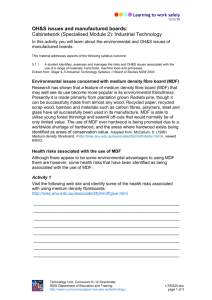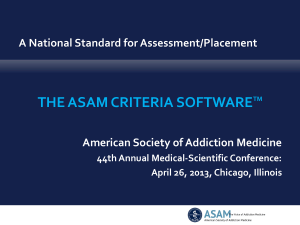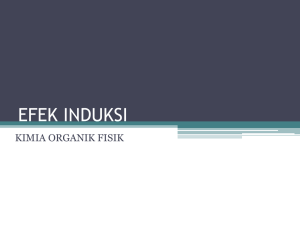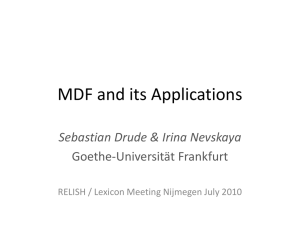ASAM Common MDF Version 4.1.0
advertisement
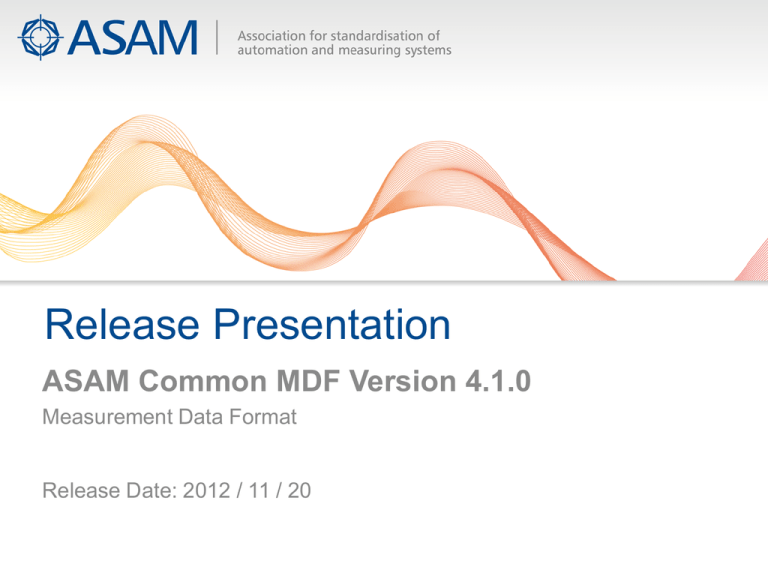
Release Presentation ASAM Common MDF Version 4.1.0 Measurement Data Format Release Date: 2012 / 11 / 20 Agenda Introduction ∙ Key Concepts ∙ History ASAM Working Group Deliverables What's new in MDF 4.1.0 ∙ Base Standard and new Associated Standards Compatibility Compliance to other ASAM Standards Summary ∙ Benefits 2 Introduction Overview ASAM MDF (Measurement Data Format) is a binary file format to store measured or calculated data for post-measurement processing or longterm conservation. Common sources of the data to be stored are sensors, ECUs or bus monitoring systems. With ASAM MDF a high performance can be achieved for both writing and reading signal data. In addition to the plain measurement data, ASAM MDF also contains descriptive and customizable meta data within the same file. 3 Introduction Key Concepts Compact binary format organized in loosely coupled blocks Measurement data stored in records according to sample rate Record layout and general signal description given by channels Supports multiple and non-periodic sample rates Synchronization via master channel concept Special data types and meta information used in automotive area Data received (e.g. from ECU) can be stored "as is" Conversion rules for calculation of physical values from stored raw values Extension of meta information by XML or "attachments" (embedding or linking of other files) 4 Introduction History 1990: MDF designed for use in the automotive industry 1991 until today: MDF versions 2.x and 3.x have successfully been used over many years and evolved to a de facto standard 2009: release of ASAM Common MDF 4.0.0 as result of a major update of the format and standardization by ASAM e.V. 2009-2012: ASAM working group for maintenance and future version development incorporates feedback and new ideas from ASAM MDF users. 2012: release of ASAM Common MDF 4.1.0 including three new associated standards 5 ASAM MDF 4.1.0 Future Version Development Working Group Members BMW AG ∙ Ralf Kemle dSPACE GmbH ∙ ∙ Thilo Maeck Markus Unland ETAS GmbH ∙ Tobias Langner Porsche AG ∙ Michael Jörger Vector Informatik GmbH ∙ ∙ Herwin Grauel Otmar Schneider 6 Deliverables Released with ASAM MDF 4.1.0 ASAM Common MDF Programmers Guide (Base Standard) ∙ ∙ Version 4.1.0 includes XML Schema files and MDF example files Associated Standard "Naming of Channels and Channel Groups" ∙ Version 1.0.0 Associated Standard "Bus Logging" ∙ Version 1.0.0 Associated Standard "Measurement Environment" ∙ Version 1.0.0 7 What’s New? Base Standard Maintenance ∙ ∙ Minor bug fixes and clarifications Foreword added New Features ∙ ∙ ∙ ∙ ∙ ∙ ∙ ∙ ∙ ∙ Compression of data blocks using two new block types New channel type for virtual data (e.g. for signals with constant value) New channel type for efficient storage of bus messages (variable but restricted length) Channel can refer to a number of attachments Channel can refer to some other channel to be preferably used as X axis New channel flag to indicate monotonously increasing/decreasing values New flags for channels and channel group for bus logging use case Storage of classification results and interval axes using existing array block Definition of a path separator character for names of channels and channel groups New XML tags to model lists in "common properties" section of meta data block 8 What’s New? Associated Standards Naming of Channels and Channel Groups ∙ ∙ ∙ ∙ Naming convention for channels and channel groups for different use cases Ensures unique identification of a channel Shows how to store common information about a channel and its source/acquisition Harmonization across the different tools 9 What’s New? Associated Standards Bus Logging ∙ ∙ ∙ ∙ ∙ ∙ ∙ ∙ Application model to store the traffic of common bus systems in ASAM MDF Currently for CAN, LIN, FlexRay, MOST and Ethernet Complete bus traffic of several bus systems can be stored in one MDF file Can be used both for replay and analysis of the bus events MDF file can contain both bus events and transported signals With some exceptions, signal descriptions can be added without duplication of data Application model is based on existing MDF structures and naming rules Information of bus events can be extended by custom members Compliance to ASAM ODS ∙ Next ODS Version 5.3 copies the application model for bus logging from MDF 10 What’s New? Associated Standards Measurement Environment ∙ ∙ ∙ Application mode to store information about the measurement environment based on using generic XML tags in "common properties" section This additional information can be used to reproduce the measurement as well as for identification of measurement files produced by certain environment conditions (e.g. faulty equipment) Definition of a few base attributes, designed for extension with own information 11 Compatibility ASAM MDF 4.1.0 is an extension of ASAM MDF 4.0.0 ∙ ∙ Every valid MDF 4.0 file is also a valid MDF 4.1 file Old tools that only support MDF 4.0 should be able to read MDF 4.1 files while ignoring the new features Associated Standards use the abilities of ASAM MDF 4.1.0 Base Standard ∙ Files created with one of the Associated Standards are valid MDF 4.1 files 12 Compliance to other ASAM Standards ASAM General Expression Syntax (GES) ∙ Used for conversion rules and trigger conditions ASAM Harmonized Objects (HO) ∙ Used for units ASAM MCD-2 MC (ASAP2) ∙ Storage of properties defined in ASAP2 ASAM ODS ∙ ∙ ∙ Apart from some exceptions ODS is able to use MDF 4.x files as external components ODS 5.3 re-uses MDF application model for bus logging Further exchange with ODS regarding additional information for classification results (new Associated Standard in preparation) ASAM HIL ∙ Uses MDF for capturing measurement data 13 Summary Benefits of ASAM MDF in General Compact storage of measurement data in binary format ∙ MDF 4.1.0 even introduces compression of the measurement data High performance for writing and reading ∙ ∙ ∙ ∙ Data received from ECU can be stored without processing Easy writing by simply appending the records produces "unsorted" MDF files Loss-less re-organization of file ("sorting") to allow fast index-based access to samples Distributed data blocks introduce in MDF 4.0.0 allow direct writing of sorted MDF files Description of measurement data within the same file ∙ Important information in compact binary blocks, optional information in XML Storage of customized meta information using XML ∙ Generic XML tags allows display also by other tools 14 Summary Benefits of ASAM MDF for Automotive Specialized for use cases and requirement in Automotive area ∙ ∙ ∙ Logging of ECU data and bus traffic Specialized data types and structures Compliance to other ASAM standards ASAM MDF 4.x continues success of well-established MDF 3.x ∙ ∙ Supported by tools continuously increases Major OEMs plan to establish MDF 4.x as company standard 15 Summary Benefits of ASAM MDF 4.1.0 Backward and forward compatibility to ASAM MDF 4.0.0 Compression of data blocks ∙ ∙ Reduction of file size (in some cases better than simple Zip) Simplifies data logger use case (reduced memory) Standardized storage of bus events and signal data within same file ∙ ∙ ∙ Allows analysis and replay of bus traffic Bus events can be evaluated even without knowledge of AS "Bus Logging" Easy extensibility with own bus information Standardized naming of channels and channel groups ∙ Easier exchange between different tools Storing additional information about measurement environment ∙ ∙ Allows reproduction of measurement (fulfillment of ISO 26262 Functional Safety) Displayed by all tools even without knowledge of AS "Measurement Environment" 16

